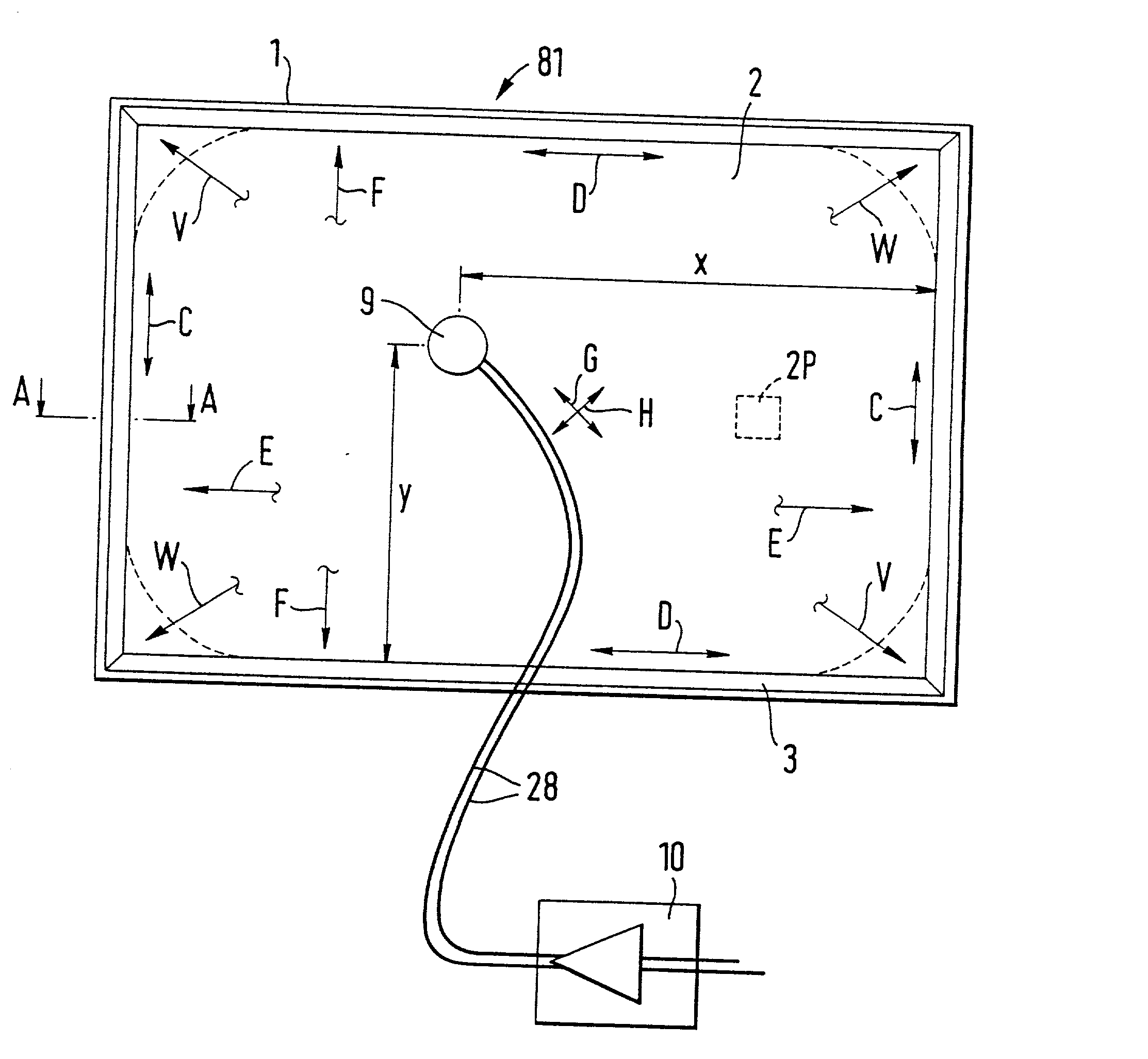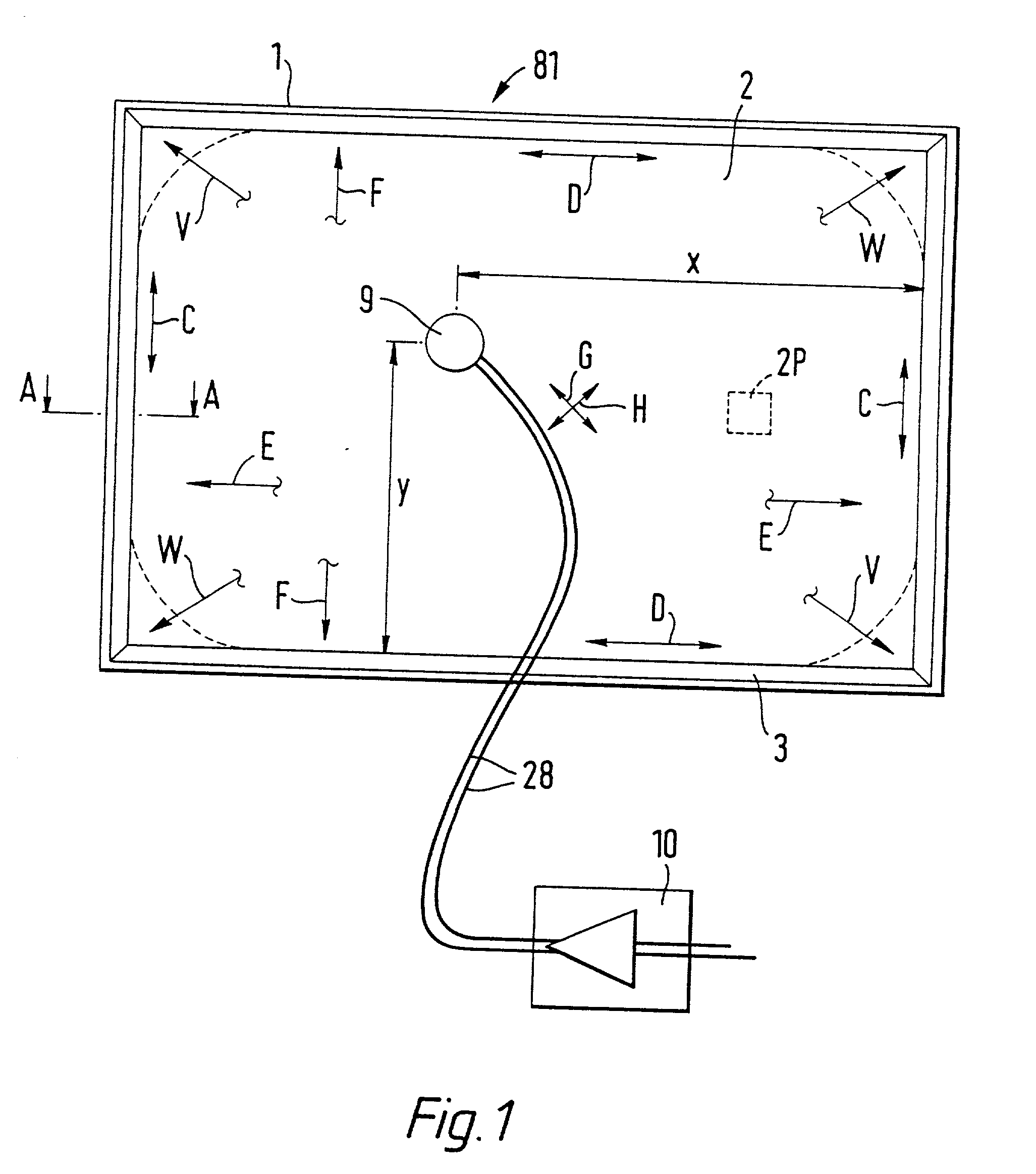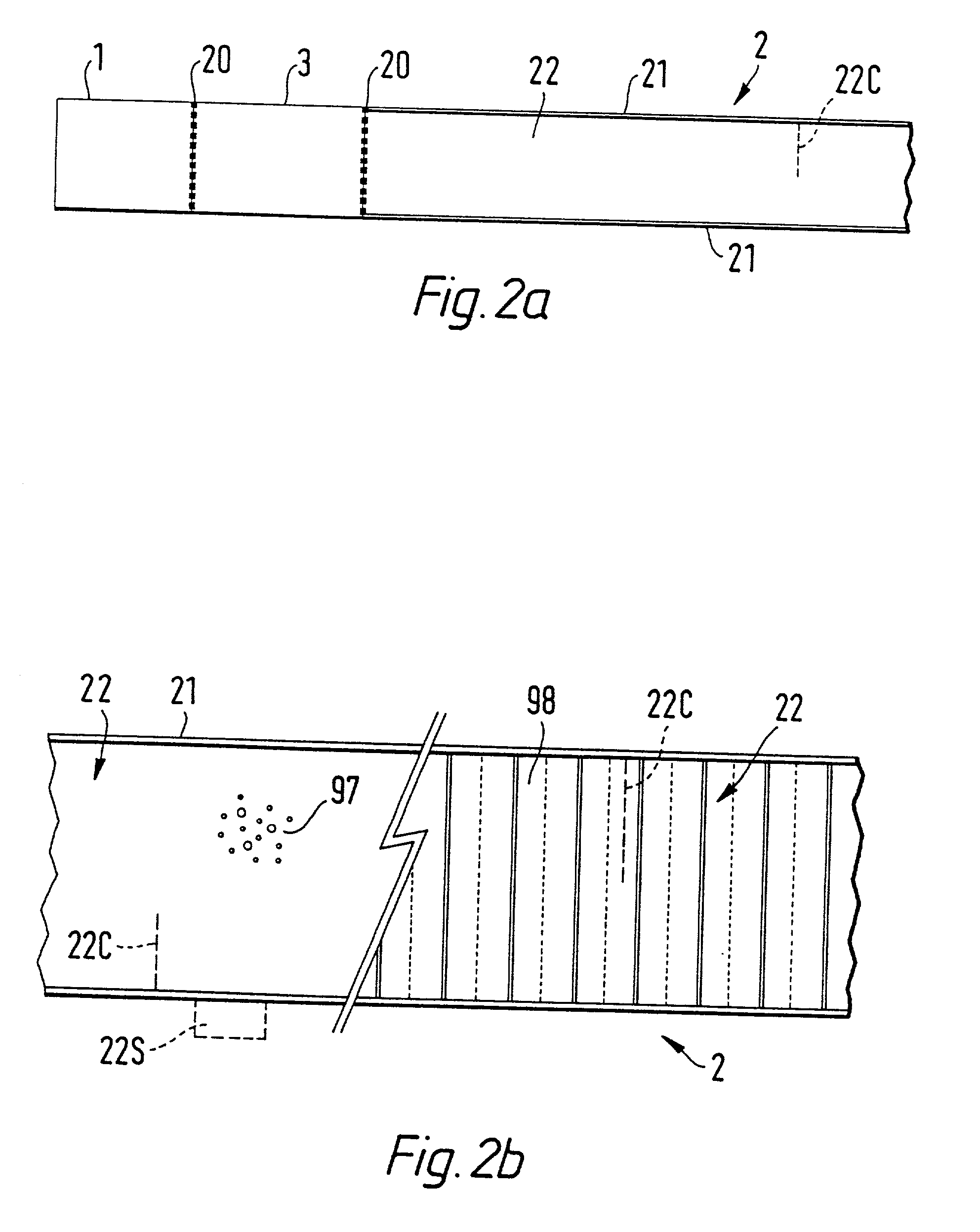Acoustic device
a technology of acoustic devices and acoustic waves, applied in the direction of electromechanical transducers, transducer casings/cabinets/supports, electromechanical transducers, etc., can solve the problems of unavoidably high directionality, limited loudness, and large volume, and achieve rapid spreading or augmenting the buildup of bending wave action
- Summary
- Abstract
- Description
- Claims
- Application Information
AI Technical Summary
Benefits of technology
Problems solved by technology
Method used
Image
Examples
Embodiment Construction
[0026] Our basic research and development has particular relevance to practical implementation of this invention, and is now reviewed in more detail.
[0027] Many factors actually or potentially contribute to bending wave action, thus frequencies and distribution etc of vibration anti-nodes associated with natural resonant modes in members hereof. As first done for members where relevant materials parameters contributing to actual bending wave action, specifically to bending stiffness, shear etc, were kept substantially the same in all or at least particular directions of interest, it was established that shape and dimensions of the members make particularly significant contributions of great value to realising inventive aspects and achieving practical device embodiments.
[0028] Dimensions, as such, for any particular shape, are mainly effective by their inherent contributions to determining lowest natural frequencies of possible actual bending wave vibration for the member, even to co...
PUM
| Property | Measurement | Unit |
|---|---|---|
| bending wave frequency | aaaaa | aaaaa |
| frequency | aaaaa | aaaaa |
| aspect ratio | aaaaa | aaaaa |
Abstract
Description
Claims
Application Information
 Login to View More
Login to View More - R&D
- Intellectual Property
- Life Sciences
- Materials
- Tech Scout
- Unparalleled Data Quality
- Higher Quality Content
- 60% Fewer Hallucinations
Browse by: Latest US Patents, China's latest patents, Technical Efficacy Thesaurus, Application Domain, Technology Topic, Popular Technical Reports.
© 2025 PatSnap. All rights reserved.Legal|Privacy policy|Modern Slavery Act Transparency Statement|Sitemap|About US| Contact US: help@patsnap.com



